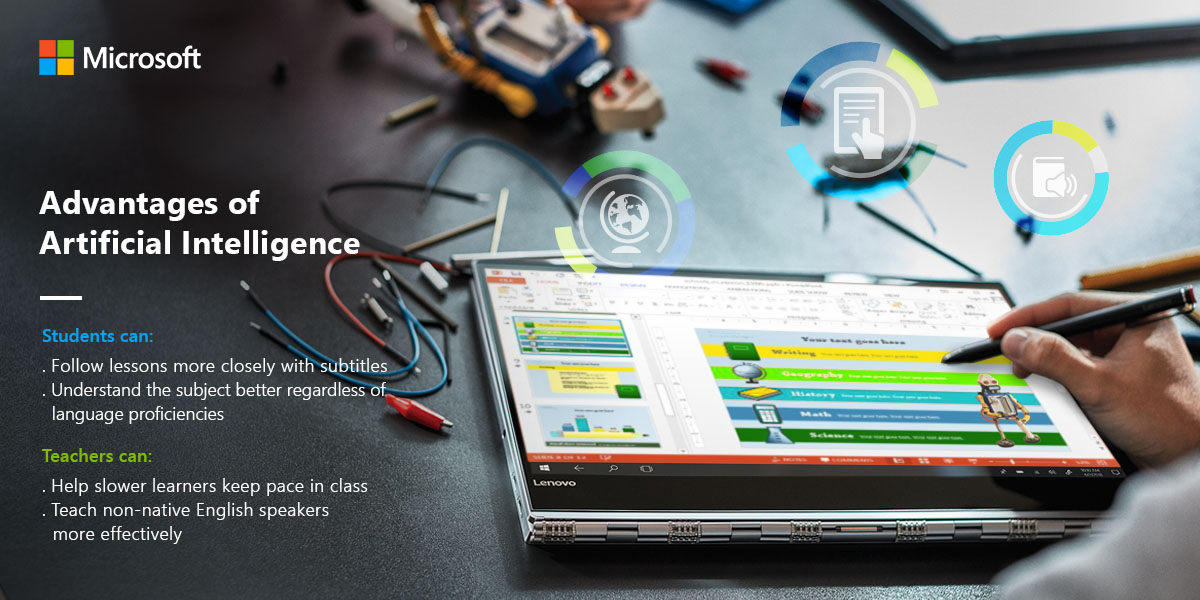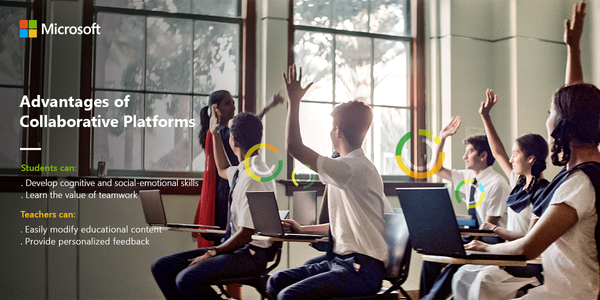New technology and digital tools will increasingly play an important role in helping teachers adopt personalized learning practices to keep students engaged in a changing world, and ultimately improve learning outcomes.
New advancements in technology have vastly transformed every aspect of our lives, and will continue to have a pervasive impact on how young people learn and develop new skills.
What can educators do today to help students thrive in a digitally enabled future? More educational institutions in Asia are finding answers through personalized learning—an approach for teachers to tailor their lesson plans to the specific needs, learning preferences, and interests of individual students.
As student-centric learning models take center stage, educators can meet the personalized learning needs of students more effectively with the support of a wide range of digital tools.
Collaborative platforms to improve student engagement
Recent Microsoft and McKinsey research found that new practices are vital to ensuring students develop both the cognitive and social-emotional skills necessary to succeed in life. Collaborative activities are essential to providing the social learning environment for students to develop such skills, such as learning the value of teamwork and how to co-create with others.
By creating opportunities for students to interact with others, both inside and outside of the classroom, digital collaboration technology can facilitate a more engaging and personalized student experience.
Collaboration tools, such as OneNote, encourage students to work together, and contribute ideas towards a common class project. Through such team activities, each student learns how to assume specific responsibilities when collaborating with others. Besides improving student participation, the tool allows teachers to more easily modify educational content and provide real-time feedback and guidance to suit individual learning needs.
Artificial Intelligence (AI) to enhance communication in the classroom

While it can be challenging for a teacher to cater to the different needs and aspirations of every student in their classroom, the use of applications that infuse machine learning and AI-driven features provides an important bridge to a personalized learning environment.
For instance, Presentation Translator, a Microsoft PowerPoint plug-in, uses automatic speech recognition to create real-time subtitles of what the teacher is saying, displaying them below the presentation. This feature can be useful in helping students understand what the teacher is saying, especially for slower learners to keep pace with lessons.
When used with Azure Cognitive Services, which has the ability to convert English subtitles into over 30 other languages using AI-powered translation, teachers are further empowered to help non-native English speakers follow the lesson more closely and get a better grasp of the subject. So now, students of various learning and language capacities can benefit from the power of technology to enable their personal learning journeys.
Immersive mixed reality (MR) to stimulate learning

Instead of learning from a textbook, mixed reality is poised to be more widely adopted in the classroom to enrich the learning experience and allow students to interact with the subject matters, rather than reading about concepts.
Mixed reality technologies can transform a classroom into an immersive environment, where the physical and virtual worlds blend together. This equips teachers with the tools to facilitate a hands-on curriculum for students to interact with virtual objects—or create immersive simulations that elevate student engagement and improve learning retention.
Microsoft works with education partners such as Pearson Immersive and Lifeliqe to bring immersive MR learning into the classroom. The Lifeliqe app for example, offers a K-12 science curriculum that includes AR models, VR experiences, and lesson plans that enable learners to interact with 3D elements. Such innovations simplify abstract concepts and serve as a useful choice in supporting students of differing learning capacities in their personal learning journeys.
Bringing Personalized Learning to Life
Many teachers and school leaders share a common vision of paving the way for personalized learning, but often face significant barriers—whether in terms of not having enough time and resources or having to cope with outdated technology.
To bring that vision to life, Microsoft works with its trusted partners to empower teachers with digital tools to drive student-centric learning forward, and ultimately improve learning outcomes. Get Microsoft Office 365 for free and learn more about how we can support you at the Microsoft Education or the Microsoft Educator Community Portal.





